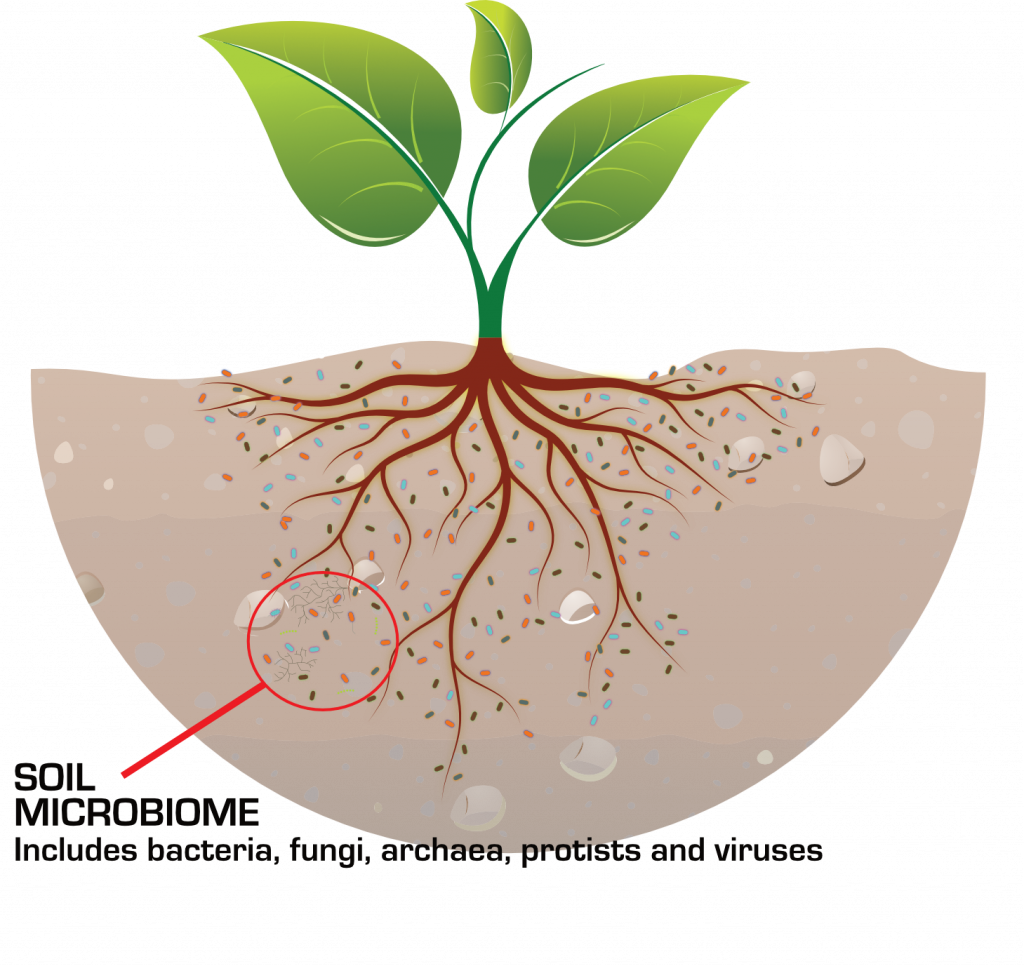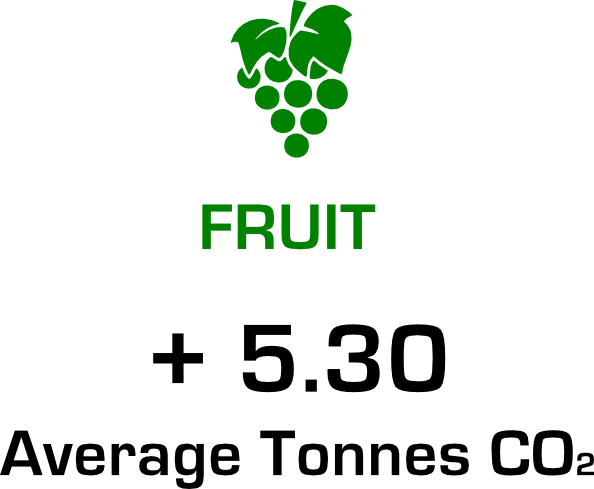CAPTURE : PREbiotics / PRObiotics / POSTbiotics
When your soils have the right food sources (prebiotics) and the right microbiology (probiotics) we can trigger them to make them grow and manufacture the right molecules in the soil to help reverse the erosion of soil microbiomes.

Microbiomes
Microbiomes are complex living multi-organism ecosystems that inhabit soils and are able to influence the matrix of the soil and consequently the ‘health’ of your soil. These healthier soils are better able to maintain nutrient availability to the roots of your crops.

Adding just PREBIOTICS without the soil containing the correct PROBIOTICS to assimilate them will have minimal effect.
Adding just the PROBIOTICS without anything for them to utilise will also have minimal effect.

CAPTURE contains a combination of very select PREBIOTICS and unique live PROBIOTICS which are absent in all agricultural soils. Our unique product is able to change the microbiome and the way nutrients are cycled in the root-zone.
CAPTURE can trigger organisms that use the carbon fixation pathways (CFPs) other than the Calvin–Benson–Bassham (CBB – otherwise known as photosynthesis) cycle. There are six other known CFPs found in bacteria and archaea.
There are several biochemical cycles that capture carbon dioxide and convert it to organic carbon without the need for light to be the promoting force, these are present in soil dwelling organisms.
-Reverse tricarboxylic acid (rTCA) cycle,
-3-hydroxypropionate (3HP) bi-cycle,
-4-hydroxybutyrate/3-hydroxypropionate (4HB/3HP) cycle,
-Dicarboxylate/4-hydroxybutyrate (DC/4HB) cycle,
-Reductive acetyl-CoA pathway (Wood–Ljungdahl pathway—WLP),
-Reductive glycine pathway.
CAPTURE has been shown to trigger several of these pathways found across many different bacterial and archaeal phyla. Some are present in your soils, some are present in CAPTURE.
CAPTURE is a soil treatment, not a plant treatment.

Im



As a result of the increased activity in the microbiome, we expect to also see benefits from your fertilisation, with significant increases in nutrient availability to the plant.

The work of the accelerated microbiome enhances the release of locked up soil phosphorous, giving a substantial amount available to the crop within 7 days of application of CAPTURE. Average increases of available P are 300-500%.
In plants, P is an essential part of sugar phosphates; is involved in respiration and energy transfer via adenosine triphosphate (ATP); and is a part of ribonucleic acid (RNA), deoxyribonucleic acid (DNA), and membrane phospholipids. Without an adequate supply of P, plant growth is diminished, maturity delayed, and yield reduced.
Capture enhances P availability and maximises plant growth.

Soil available Potassium is increased and made available to the plant. CAPTURE has been shown to elevate levels of available K within 48 hours.
Potassium is fundamental to many metabolic processes through the activation of a large number of enzymes required for chemical reactions. These include the synthesis of proteins and sugars required for plant growth. Only a relatively small proportion of the plant’s total potassium requirement is needed for this. The majority is required for the essential role of maintaining the water content of plant cells. Many are interlinked

Results of soil analysis 14 days after CAPTURE application at 20L/Ha.
Typical results are shown below. Soil, crop and irrigation types will alter results.
| Nutrients | Control (mg/ml) | + Capture (mg/ml) | % Increase |
| Ammonium (NH4+) | 2.14 | 7.01 | 227.6% |
| Potassium (K+) | 34.25 | 42.47 | 24.0% |
| Calcium (Ca2+) | 168.35 | 435.55 | 158.7% |
| Magnesium (Mg2+) | 91 | 241.0 | 164.8% |
| Sodium (Na+) | 102.5 | 277.44 | 170.7% |
| Nitrate (NO3–) | 132.8 | 211.9 | 59.6% |
| Phosphate (H2PO4–) | 12.24 | 82.2 | 571.6% |
| Sulphate (SO42-) | 583.93 | 1459.65 | 150.0% |
| Chloride (Cl–) | 154.62 | 448.26 | 189.9% |
